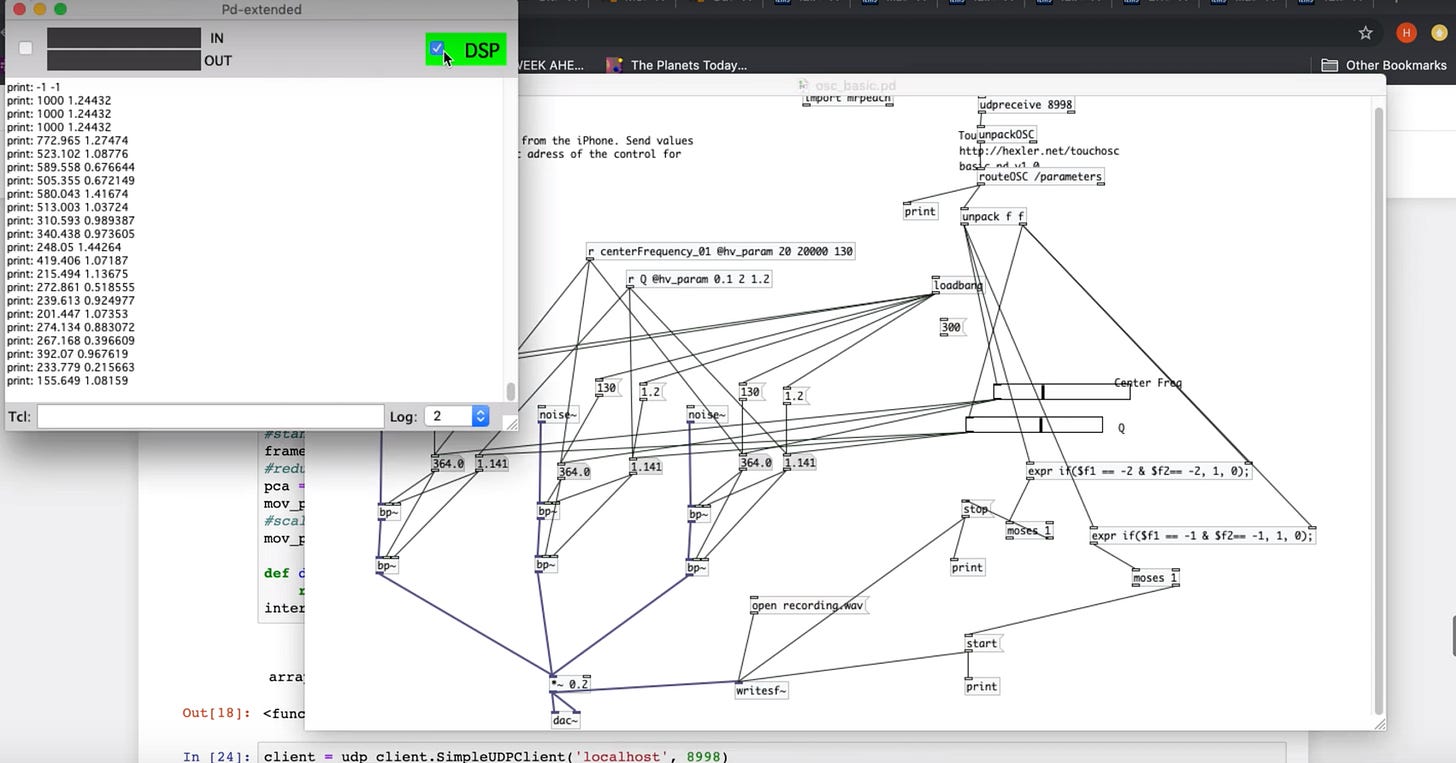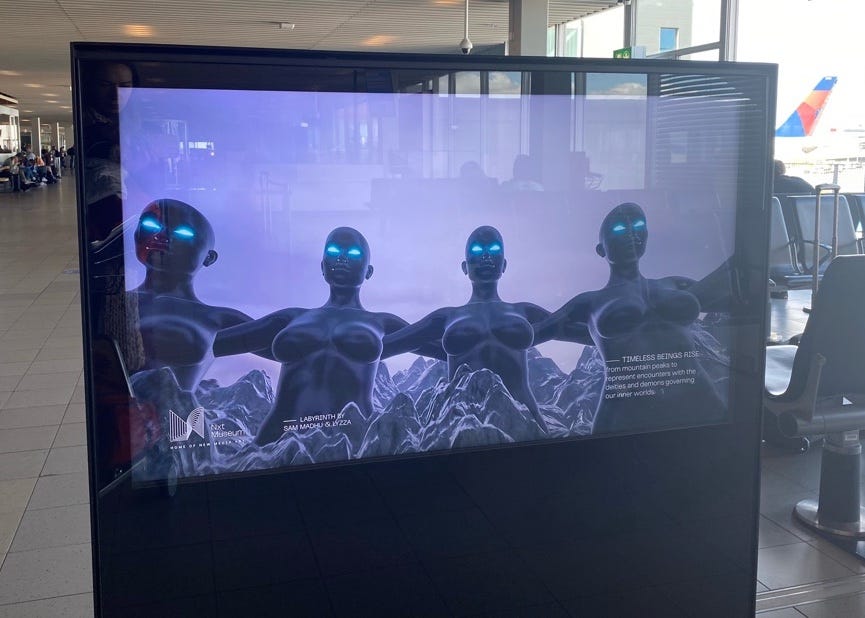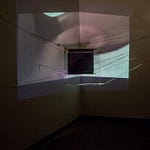With growing ability and ineptness, humans have rapidly, and arguably rabidly, raced towards artificiality in the last decades. The critique of progress as witness to artificiality is based in seemingly obvious discrepancies among perspectives on life. As defined as life itself: nature and ‘it’s natural’ have become nearly meaningless generalisations within contexts such as societal morays and familial structures, both of which are brutally used to justify convicted positions of either digging heels in or marching blindly toward a utopian vision, based on subjective experience. This brutal practice, as rugged as nature itself, attempts to even-out the often-called playing field. Enter the rabidly zigzagging movement of progress, propelling toward our so-called inevitable progression to life with robots, complete with off-the-grid resistance.
The concept of naturalism, though despite seeming old to some remains a relatively new concept given a certain span of time, was made accessible to the general public by French painters. The role of artists within society has often been ideological as well as imaginary. The notions of what is natural, acceptable, and beautiful were part of the artists’ labours. The attention to art was determined by who paid and also who paid attention, what was available-not terribly unlike today. Simply because the appearance of homogeneity is omnipresent, doesn’t mean it takes a great lot of doing to find something different.

Innovation and technology, having reached into the visual realm, again thank you France, for the race to birthing imaging technology, photography has advanced (or declined depending on who you ask) through our palm devices. The resources from, again, nature (and horrifying labor practices), have us all in touch with a supply chain of dangerous cobalt mining and wizzing images and ideas at faster rates. The expediency has done quite a number on our digestive systems, as well as our relationships. We can see the technology mirror back to us, every aspect of our psyches and societies, conscious or unconscious and amplified through the ideas which are considered natural. The situation reminds me a bit of the way horses were once rode into battle. They had little choice as to where the rider’s steered them. In the constructed paradigms’ of West and East ideologies, the ways the cobalt circuits connect our communication devices seem to grow a similarity through fantasies of how things are, versus actually knowing. I have to wonder who is doing the riding of the horses now, or are the horses riding us into battle?
Not so long ago, parents, meaning two people joining together through marriage or agreement, made a lifelong commitment to lives other than their own. This structure, which served humans well to increasing population has been on the decline, for awhile now. Fuelled by adolescent arguments, often described as anti-patriarchal are often reactions to limits, imagined or imposed, upon that which the societal morays and minds are deeming acceptable.
Many of those limits are clearly anger inducing with good cause. There were times, and still are places, where women are punished for reflecting back to men, their unchecked subconscious psychosocial motivations have on others. The call is to relate with each other, instead of dominate. So again, with our horses, slowing them down, is it parental limitations that are as gendered as they once were? Or as women wearing pants now becoming the patriarch they hated replaced with the M. As within the laws of physics, the closest tool we have to understanding nature, push far enough in one direction and a reactionary whiplash is bound to show up somewhere…after all, it’s only natural.
So when it comes to the human races, where is the mark, what horse are we riding in on, and what is the intention? Is it stemming from unresolved traumatic tension and the motivation is rationalized after? Or can we ease up a bit and find a more cooperative playing field? I would beg of the latter, but that is usually seen through blazing eyes as the wrong choice to make in some peoples’ vision. So I wonder, how did peace become subversive? Cooperation and love, taboo? Due to the name of such virtuous actions being used as a mask for disingenuous actions poised under the artifice of good.
And now that artifice, based upon the word artificial, which is at present defined as: made or produced by human beings rather than occurring naturally, especially as a copy of something natural…are defining themselves as constructs. Being artificial is implied in being fake, phony, shallow affect, and other traits typified by sociopathy. Increasing the tolerance for artificiality works in concert with the rise of behavioural pathologies and their demand to exist.
The psyche itself, prone to manipulation, self-deception, social influences, has a real conundrum in the will-to-power sense. It is as if the eros unloved, perverts upon itself, becoming stunted within a pubescent stage of development: societal narcissism. Within the presence of plenty, the increasingly individualistic society creates isolation, plus an invisible neoprene barrier to connection which shows that, not only has society stepped beyond the doormat but is living INSIDE the home, as well as inside your psyche. All the while, master-class sellers are inviting you to spend more of your money and time on acquiescing to their choice of lifestyle, instead of you choosing your own, often saddled with a legitimate query: can you even choose? Of course you can.
How did we end up so obsessed with being unfree when we have more choices? We can know the choice burden has tipped when psychic shops offer individuals the possibility for paying to give their fate to someone else. Believing we are slaves to a system, prisoners of a world, victims to our own rhetoric? The imaginary cage, tethered by a reaction to structures, however artificial they might have been, had a function, and still do: to mature the creature out of adolescence, towards adulthood. The evidence of this is how we treat our children and our elders. The hierarchy of significance is clearly weighted with a privilege to handing un-earned agency over to new life, as a reaction to “the patriarchy,” or rather the rules that were. The mistreatment and discarding of knowledge based in experience is evident in the way elders are treated in society. This reaction has become endemic in conservatives and progressives alike, but one of several ideological sites the supposedly two-opposites have in common. In efforts for excessive individuation, we ended up with teams dedicated to figuring out how to establish diversity, when the *ahem* natural diversity was residing along within us all the time. The structures which afforded excess, gave us great freedom, and with freedom comes responsibility. Freedom without responsibility is the prime breeding ground for tyrants and image makers that have little-to-no comprehension of the laws of physics.
Anyone care to remember Hitler’s frustration with not being able to master basic principles in perspective might consider the eye-brow raising of celebratory blob making as has high-culture. And this is not to police creativity, not at all, but invite a bit more consideration about our agency around resource usage. Since the technocratic funding of A.I. is likely far, far beyond my reach, the only small tools I have are representative, illustrative, and inviting for open thought. As history has also shown, not all of our ideas are good ideas. A little bit of ego pain pales in comparison to a repetition of an atomic ripple effect of galavanting toward a future without some reflexive reflection. We owe at minimum, a modicum of consideration to where popular belief leads us to go. As things look today, the earth will recover, but humanity may become something far less than humankind.
Extra special thanks to Harald de Bondt, a critical collaborator in the creation of Afjordance, as well as videography recording assistance by Børge Indergaard. Harald created the wireframe and soundtrack as an ancillary project for his studies in movement and technology in Germany. The idea for the video formed out of the self-produced Solfege Souche, and studying: Why Music Makes You Move, online UiO course, Butoh course on scholarship with Mushimaru Fujzieda at the National Academy for the Arts in Oslo. As in the American conceptual art movement of attempting to follow an idea out to its end, the resulting video work depicts the way artifice mirrors our moves, and data is referenced to orchestrate audio.
Many of the posts in the Cookie Jar have inspired private email responses. I regret not having updated the posts with the responses which I often find more interesting than the Cookie Jar posts themselves. Since it seems clear the motivation to publicly share their thoughts is lacking, the comments shared will be without the commentor’s identity, which is yet another topic I may write about: the obsession with image maintenance and fear of public discourse. The reader writes:
“Interesting topic, as far as I could understand. Its all a bit elusive though.
I’d be more interested in very specific topics as to what your perspective is on the purpose of Blame and shamePraise and punishmentHierarchal thinkingVictim and predatorGuilt and shameCompromiseDemocracyThe institutions of education, health and foodGender rolesSeparatist culture (which you touched upon in the part about children and elders) Maybe then we can bring this conversation down to earth a bit more. I perceive your writing as unnecessary complicated and confusing. Long sentences and an over use of words that need to be looked up. And I’ve been told ( by non native English speakers) that they find my writing not easily understood. Yours takes it up a notch, which makes me loose interest. But maybe your target audience is scholars and people who are ‘highly educated’ within institutions. Lets keep the conversation going, as long as it is constructive and destructive in equal measure.”



















Share this post